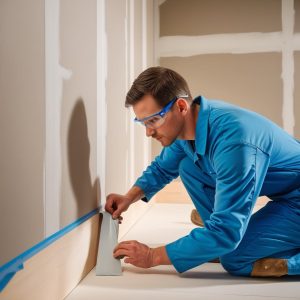Screeding is an essential part of construction, ensuring smooth and level surfaces. Whether you’re laying a new floor or renovating, mastering screeding can make a significant difference.
Getting started might seem challenging, but with the right tools, preparation, and techniques, it becomes manageable. This guide outlines five essentials to help you take the first step confidently.
Essential Tools for Screeding
To begin screeding, having the right tools is critical. Without them, achieving a professional finish can be difficult. Here’s what you’ll need:
- Straightedge: Used to level and smooth the screed.
- Trowels: Handy for spreading and finishing.
- Spirit Level: Ensures accuracy and evenness.
- Mixing Equipment: For creating a consistent screed mixture.
- Protective Gear: Safety goggles and gloves for personal protection.
Each tool plays a crucial role. A straightedge helps maintain a level surface, while trowels refine the finish. A good spirit level ensures that no uneven spots are left behind.
Investing in quality tools not only makes the job easier but also improves the final outcome.
Preparing Your Surface for Screeding
Preparation is the foundation of a successful screed. Without proper groundwork, even the best screeding techniques may fail.
Start by cleaning the surface thoroughly. Remove any debris, dust, or grease that could interfere with bonding. Use a primer or bonding agent to enhance adhesion, especially for challenging surfaces.
Next, check for cracks or weak spots. Repair these areas to prevent uneven screeding. Once everything is secure, ensure the area is level and free of obstructions.
Taking the time to prepare your surface properly ensures your screed remains durable and long-lasting.
Choosing the Right Screeding Mix
The choice of screeding mix depends on your project’s requirements. Here are some options to consider:
- Traditional Sand-Cement Screed: Ideal for general use.
- Self-Levelling Screed: Perfect for smoother finishes with minimal effort.
- Fast-Drying Screed: Suitable when time constraints are a concern.
Consistency is key. Mix the components thoroughly to avoid weak spots or cracking. Pay attention to manufacturer instructions to achieve optimal results.
Selecting the right mix ensures the durability and functionality of your screed.
Step-by-Step Guide to Screeding a Floor
- Lay Down the Screed Mix: Spread the mix evenly across the surface.
- Use a Straightedge: Level the screed by moving the straightedge in a sawing motion.
- Check for Levelness: Regularly use a spirit level to ensure accuracy.
- Smooth the Surface: Use a trowel for finishing touches.
Avoid rushing. Work methodically and ensure each section is completed before moving to the next.
By following these steps, you’ll achieve a professional-grade screed every time.
Tips for Achieving a Smooth Finish
A smooth finish is the hallmark of excellent screeding. To achieve this:
- Ensure your mix is consistent and lump-free.
- Work in small sections to maintain control.
- Use a float to refine the surface after initial smoothing.
Curing is equally important. Allow the screed to dry properly to prevent cracking. Follow recommended drying times for the specific mix you’ve used.
Patience and attention to detail are key to a flawless finish.
Conclusion
Mastering screeding starts with understanding the basics. From choosing the right tools to perfecting your technique, every step matters.
With these five essentials, you’re ready to take on your first screeding project. Start today, and bring your construction goals to life with confidence.



